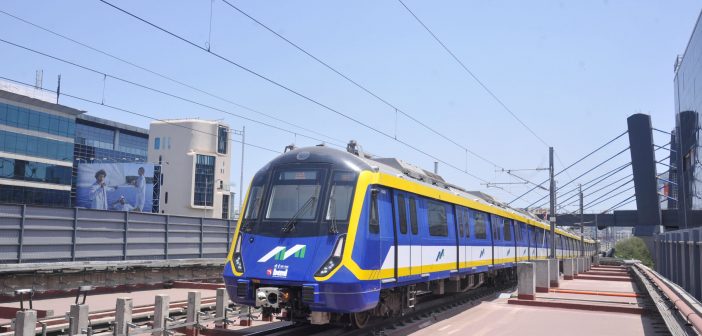Mumbai, India’s financial and commercial capital, thrives on a robust economy, and its metro system plays a vital role in propelling this growth. These rapid transit systems not only offer convenient and efficient transportation for millions but also significantly contribute to the city’s Gross Domestic Product (GDP). Let’s explore the multifaceted ways Mumbai’s metros are driving economic growth.
Direct Economic Benefits: Time Saved, Productivity Gained
Mumbai’s metro network, currently spanning two lines, has demonstrably enhanced the city’s economic landscape. Compared to conventional options like buses and cars, metro trains offer a faster and more reliable mode of transportation. This translates to reduced travel times, allowing individuals to spend more time at work, boosting overall productivity. Studies estimate that Line 1 alone saves commuters significant time, leading to substantial annual productivity gains. Additionally, the metro network connects previously underserved areas to major business districts and commercial hubs. This improved accessibility opens doors to a wider range of employment opportunities for residents, fostering economic mobility and contributing to the city’s talent pool.
Indirect Economic Benefits: A Ripple Effect
The positive impact of Mumbai’s metros extends beyond direct time savings and travel efficiency. These systems create a ripple effect, stimulating economic activity across various sectors:
- Real estate development: Metro stations act as catalysts for real estate development in surrounding areas. Improved connectivity leads to increased land value and attracts investments in residential and commercial projects. Studies show that property values near metro stations in Indian cities can increase significantly. This not only generates revenue for the government through taxes and fees but also creates jobs in the construction and real estate sectors.
- Increased tourism and business activity: Improved connectivity facilitates easier movement for tourists and business travelers, potentially boosting tourism and business activity within the city. Studies suggest that improved urban mobility can lead to a significant increase in tourism spending in developing countries.
- Reduced healthcare costs: Traffic congestion is a major contributor to air pollution in Mumbai. Efficient metro systems can help reduce traffic congestion, leading to cleaner air and potentially lowering healthcare costs associated with respiratory illnesses.
Quantifying the Impact: A Glimpse
While attributing a specific percentage increase in Mumbai’s GDP directly to the metros is complex due to various contributing factors, available data provides valuable insights. Reports estimate the annual economic impact of Line 1 to be substantial, encompassing benefits like increased productivity, reduced travel costs, and real estate development. Additionally, the high daily ridership on both lines translates to significant economic activity associated with ticket sales, maintenance, and employment generation within the metro system itself.
Looking Ahead: Further Expansion and Potential
With the ongoing construction of additional metro lines and planned future expansions, Mumbai’s metro network is poised to play an even greater role in shaping the city’s economic future. These expansions have the potential to connect further suburbs and satellite towns, unlocking new economic opportunities and contributing to a more balanced and inclusive urban development. Additionally, by providing a convenient and efficient alternative, metro systems can encourage a shift away from private car ownership, leading to reduced traffic congestion, environmental benefits, and potential cost savings for individuals.
A Catalyst for a Sustainable Future
Mumbai’s metros are not just transportation systems; they are engines of economic growth and transformation. By facilitating faster commutes, boosting accessibility, and stimulating economic activity across various sectors, these rapid transit systems are significantly contributing to the city’s GDP and shaping its economic landscape for a sustainable future. As the network expands, its impact on the city’s economic vitality is certain to grow even stronger.





